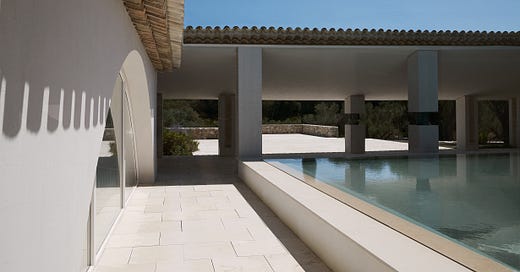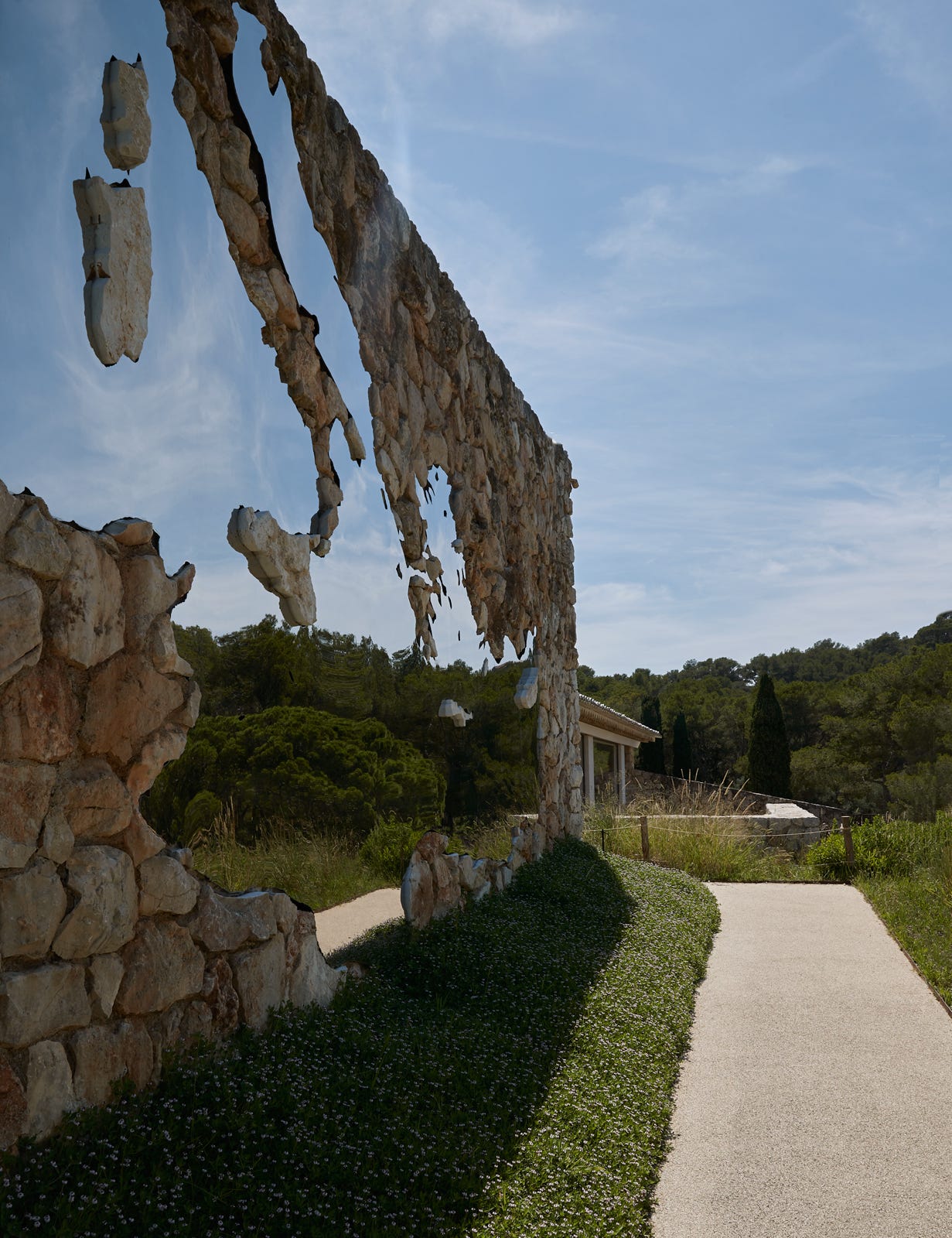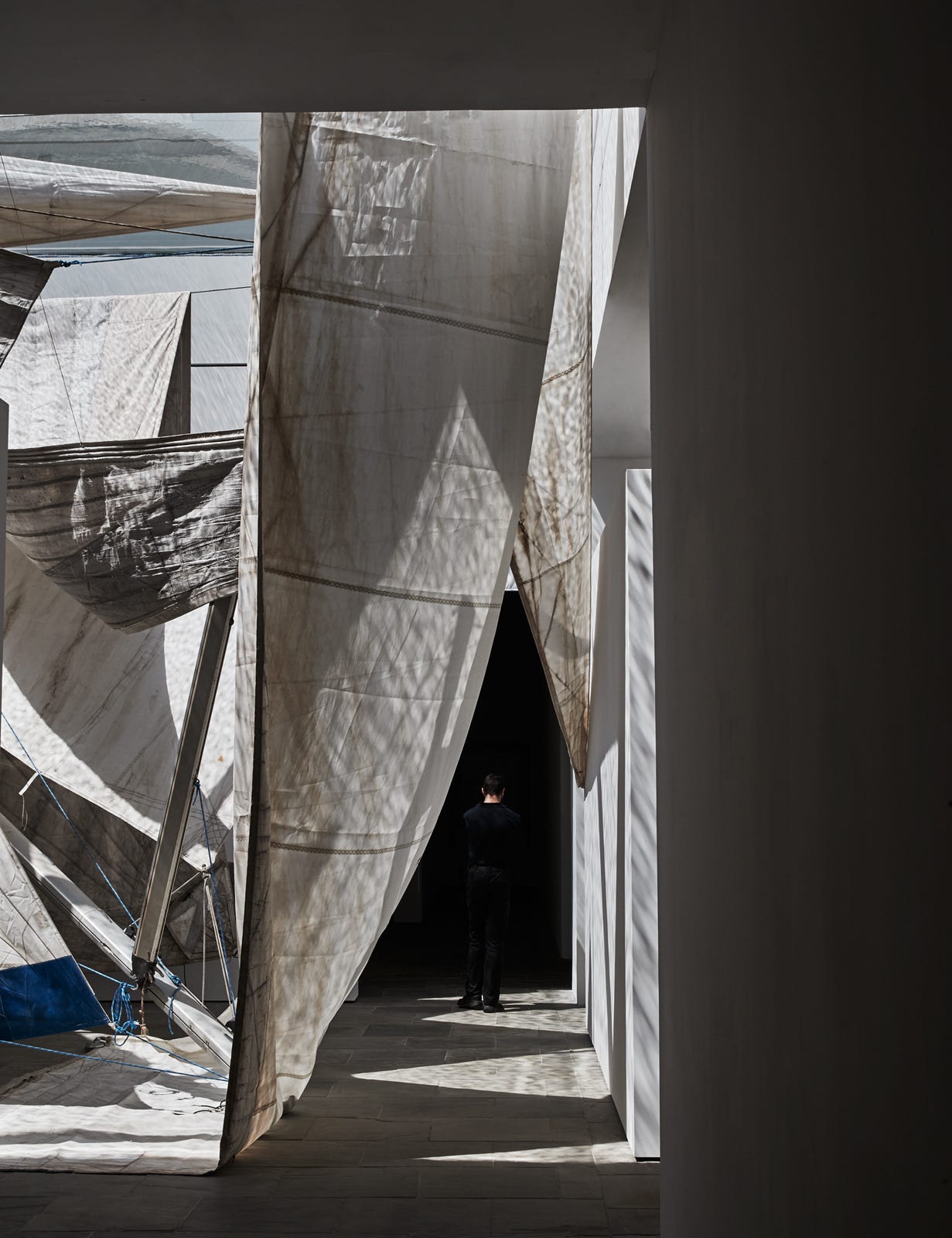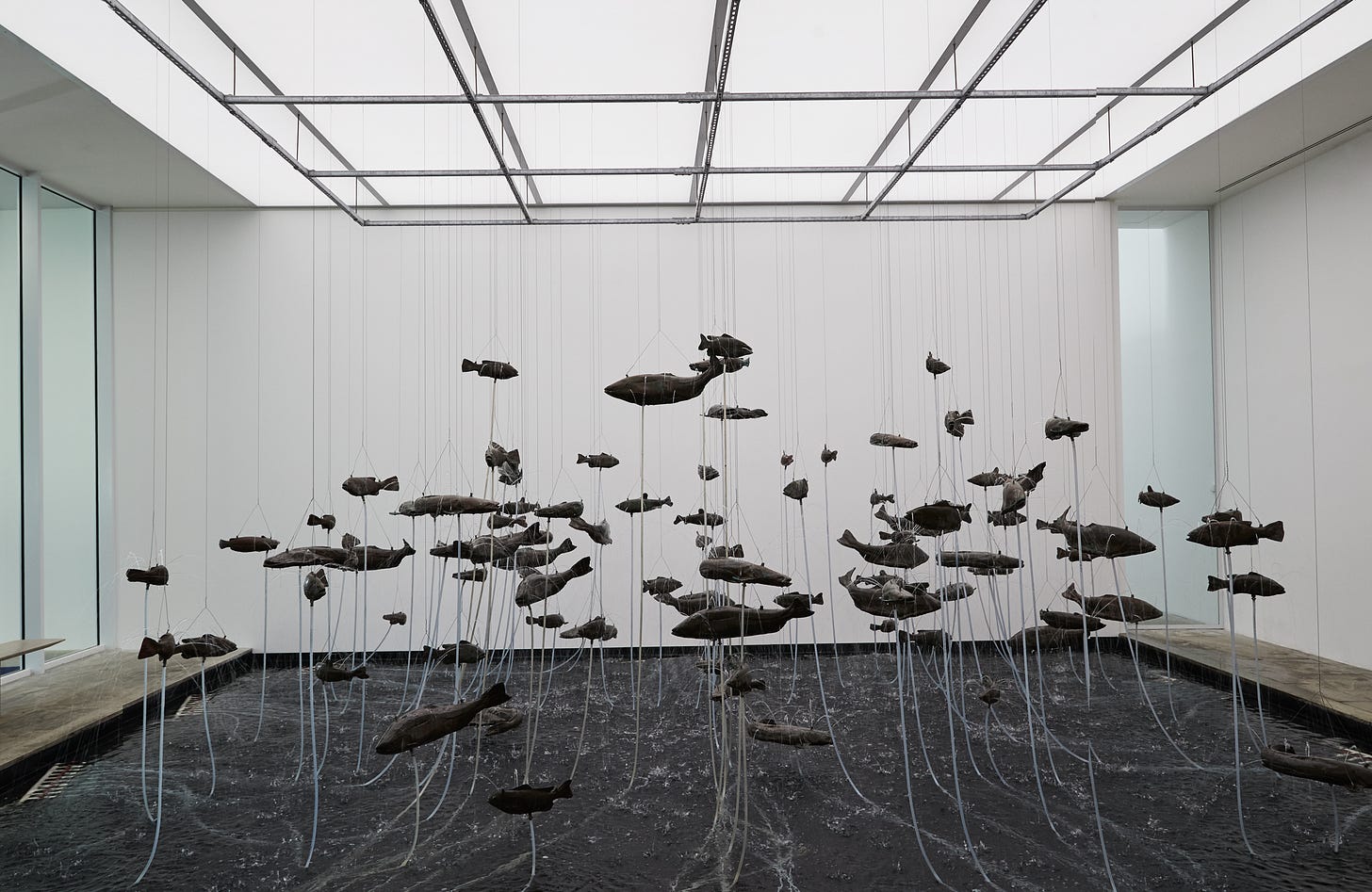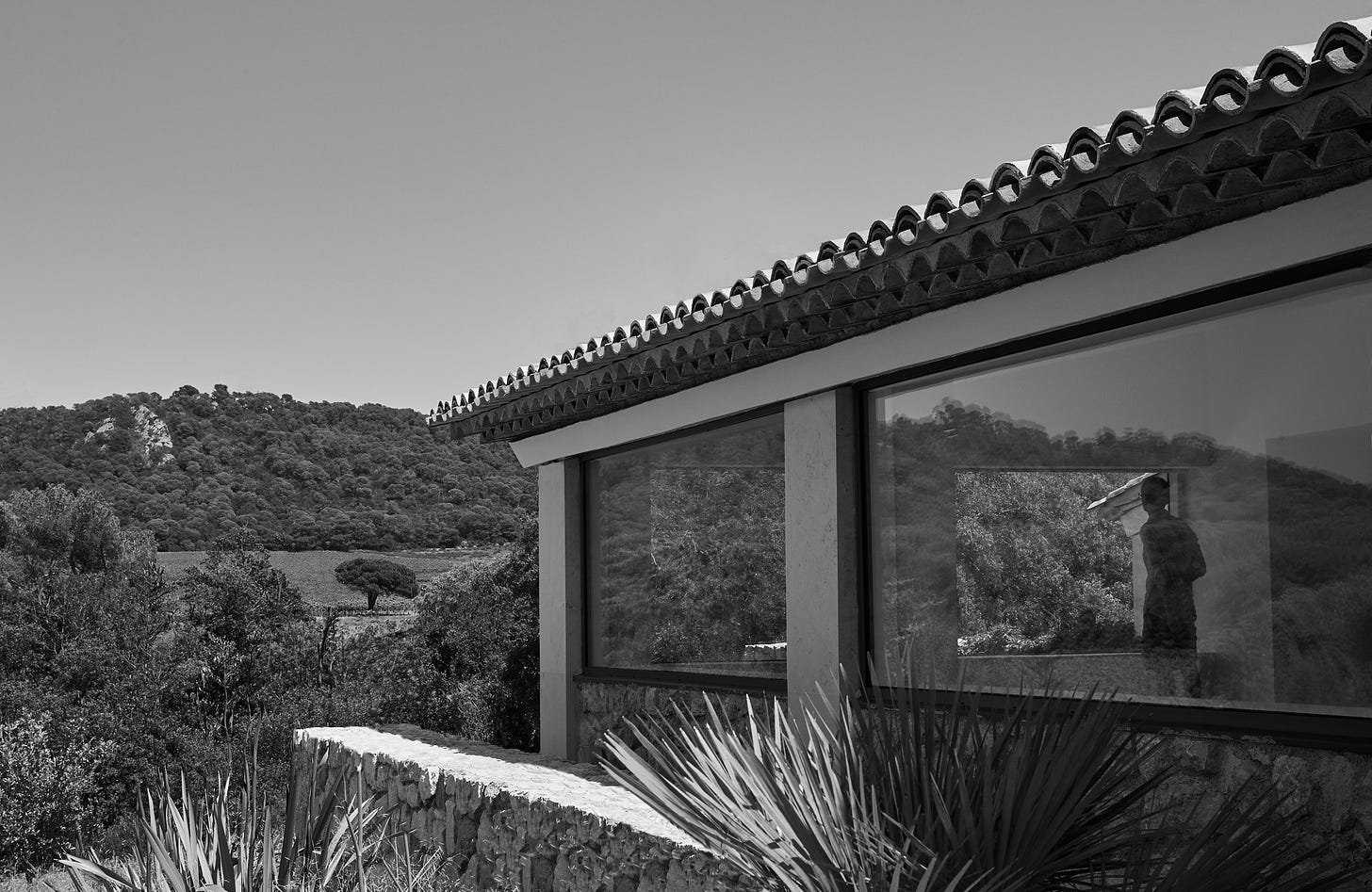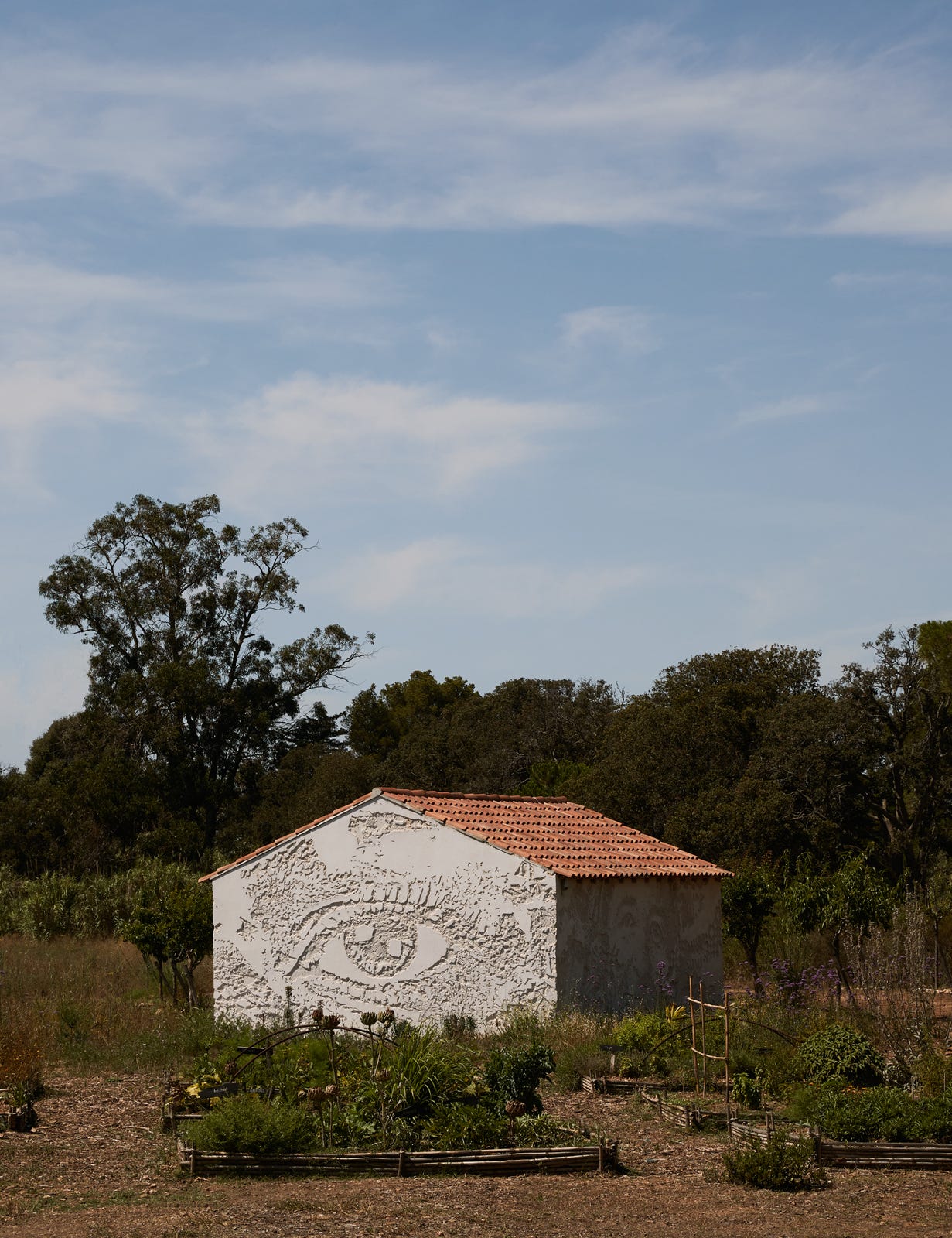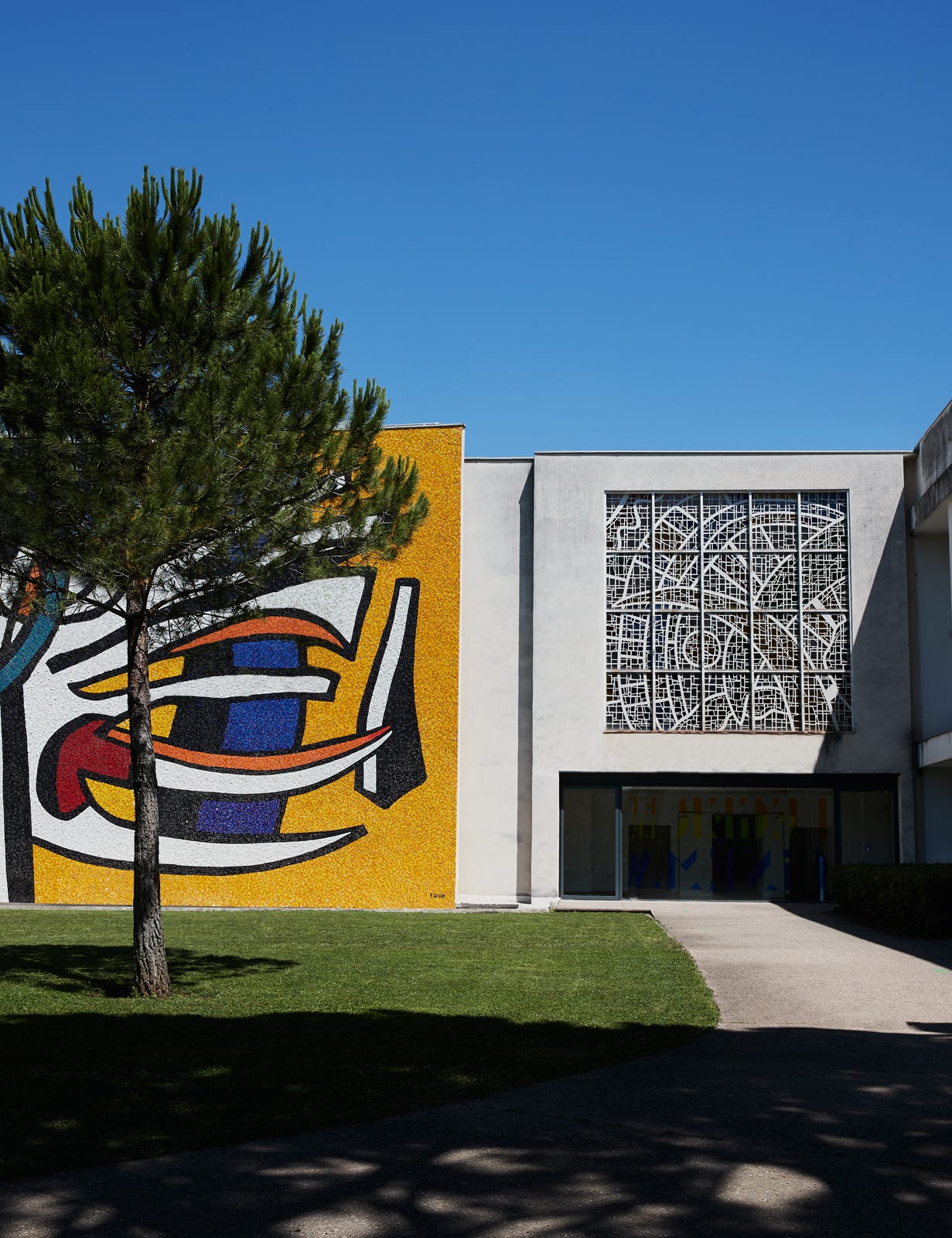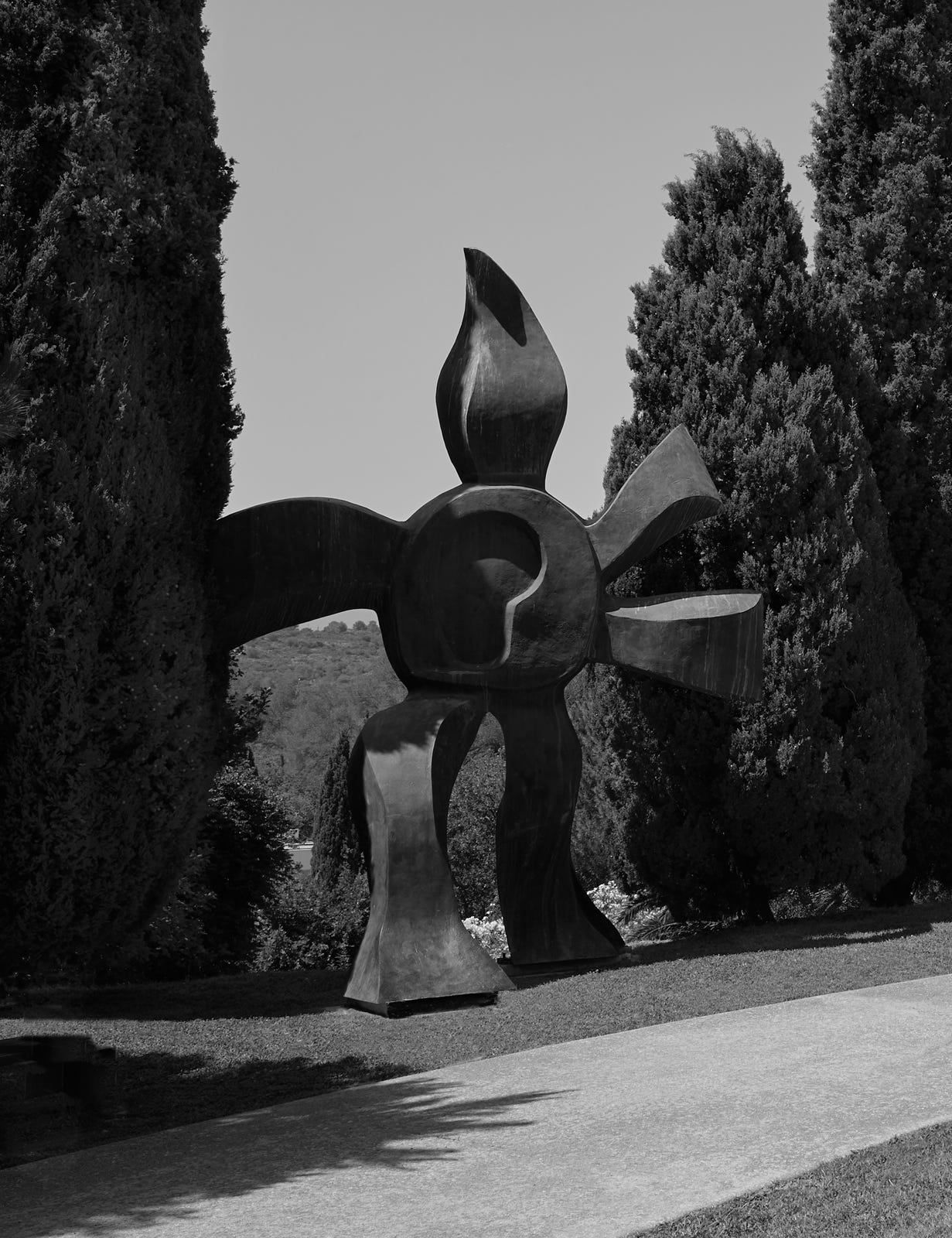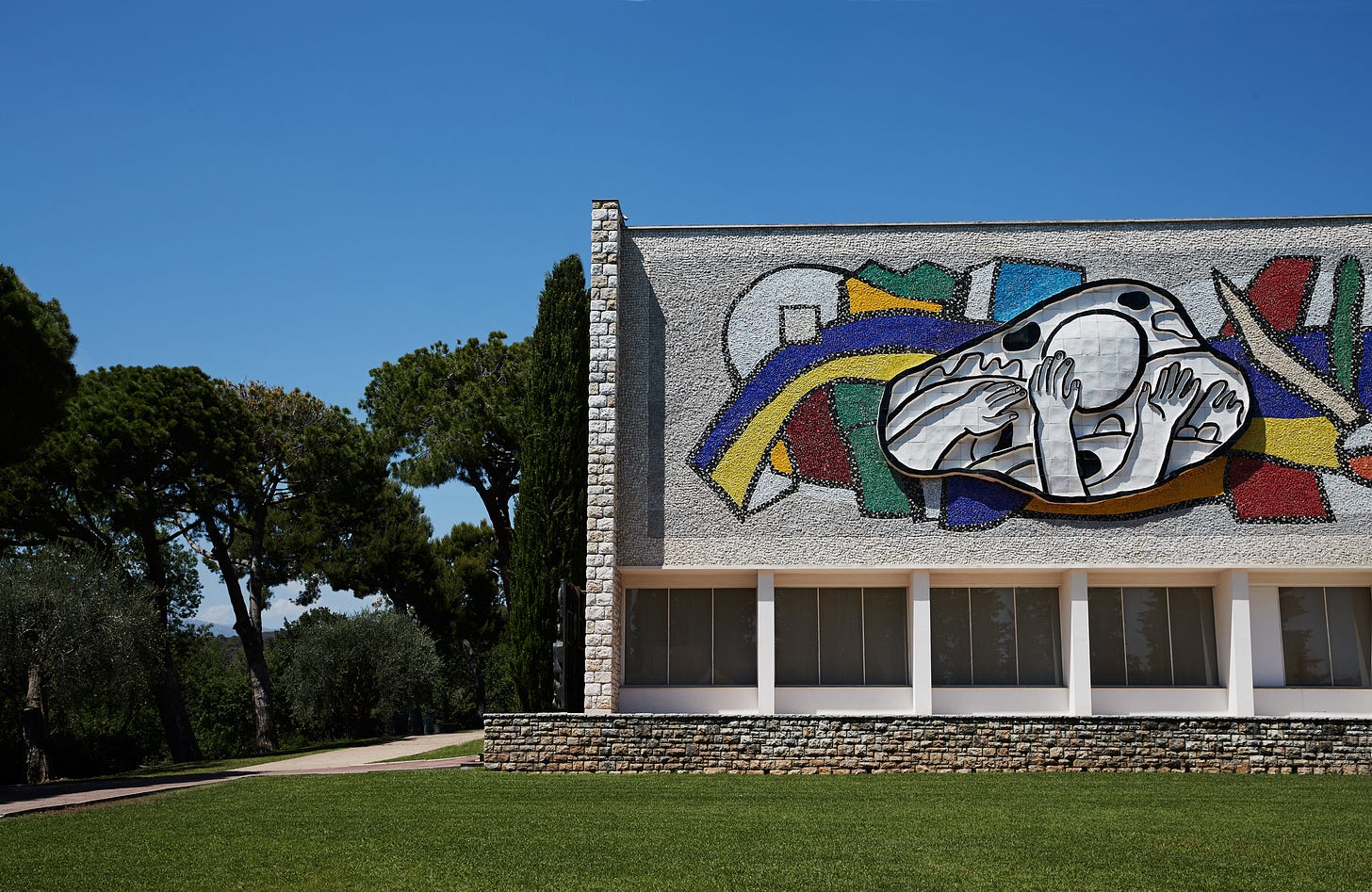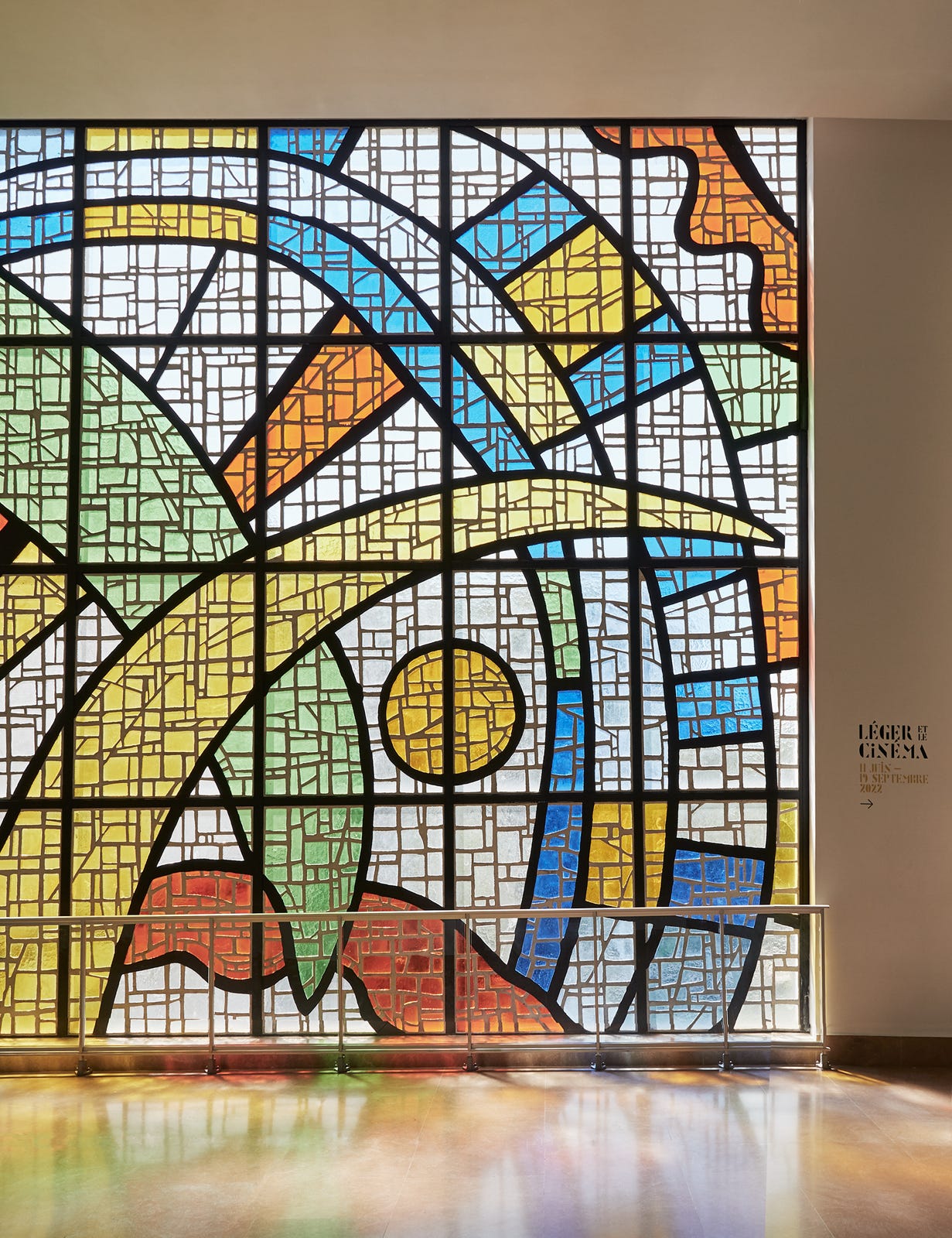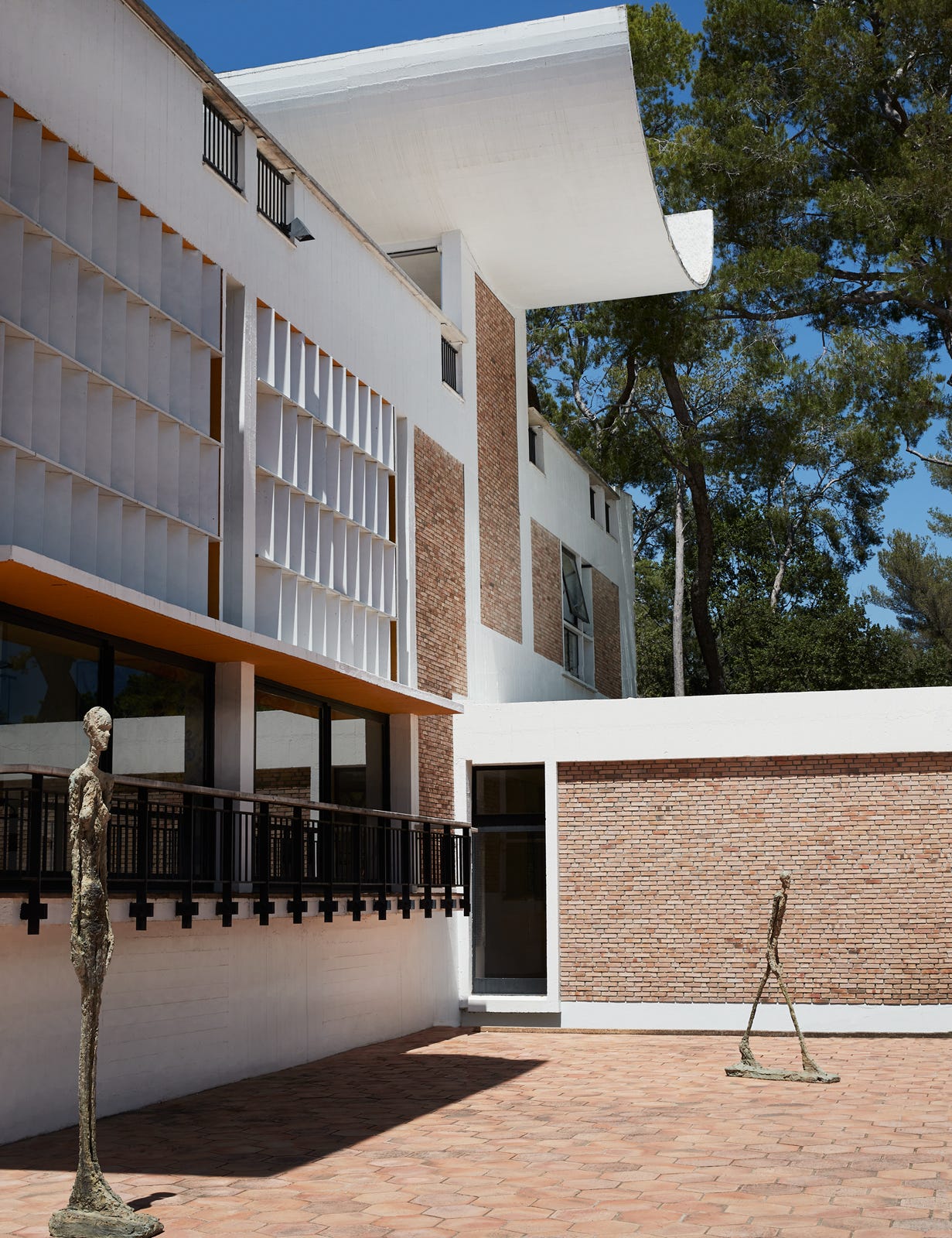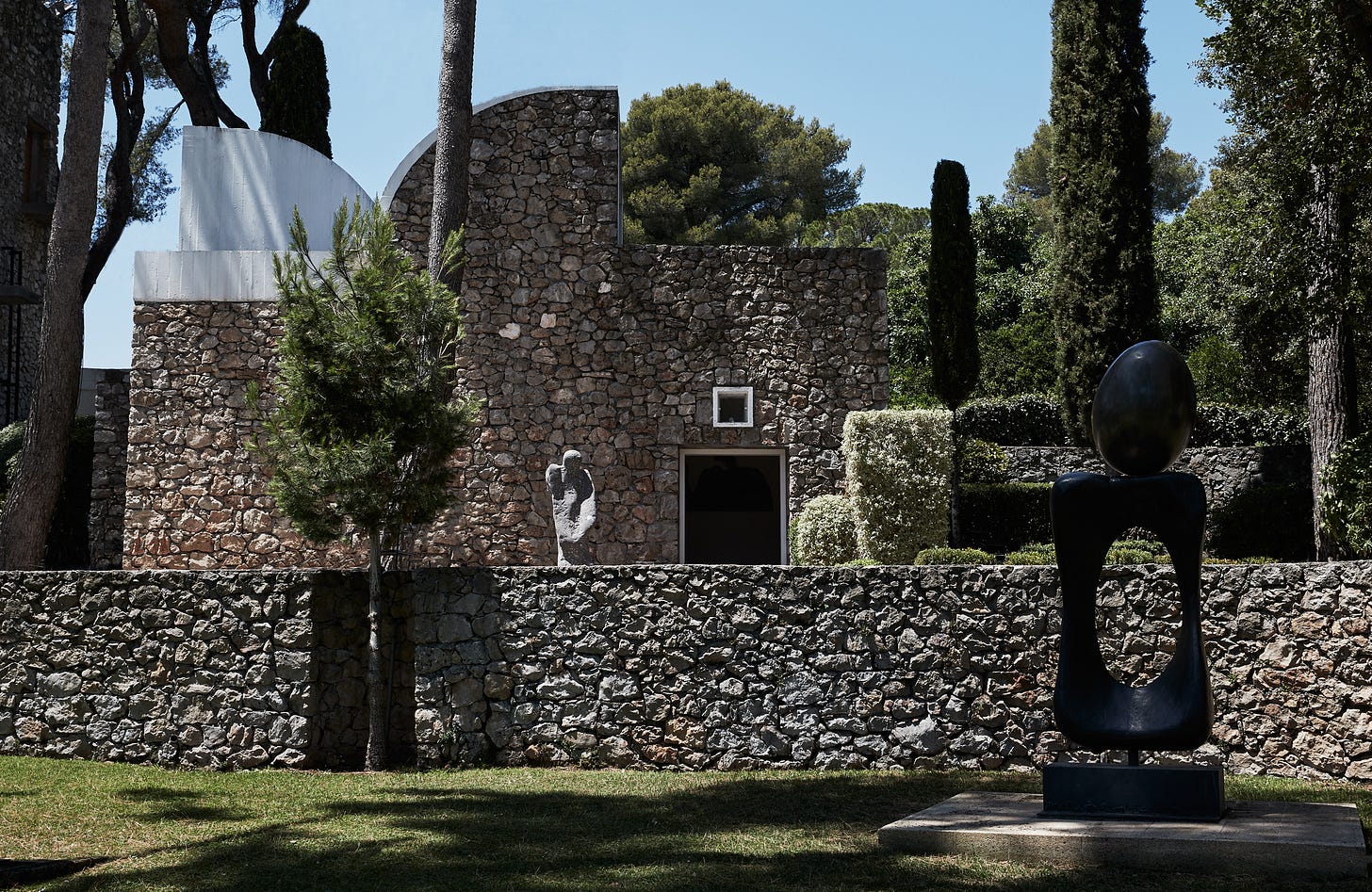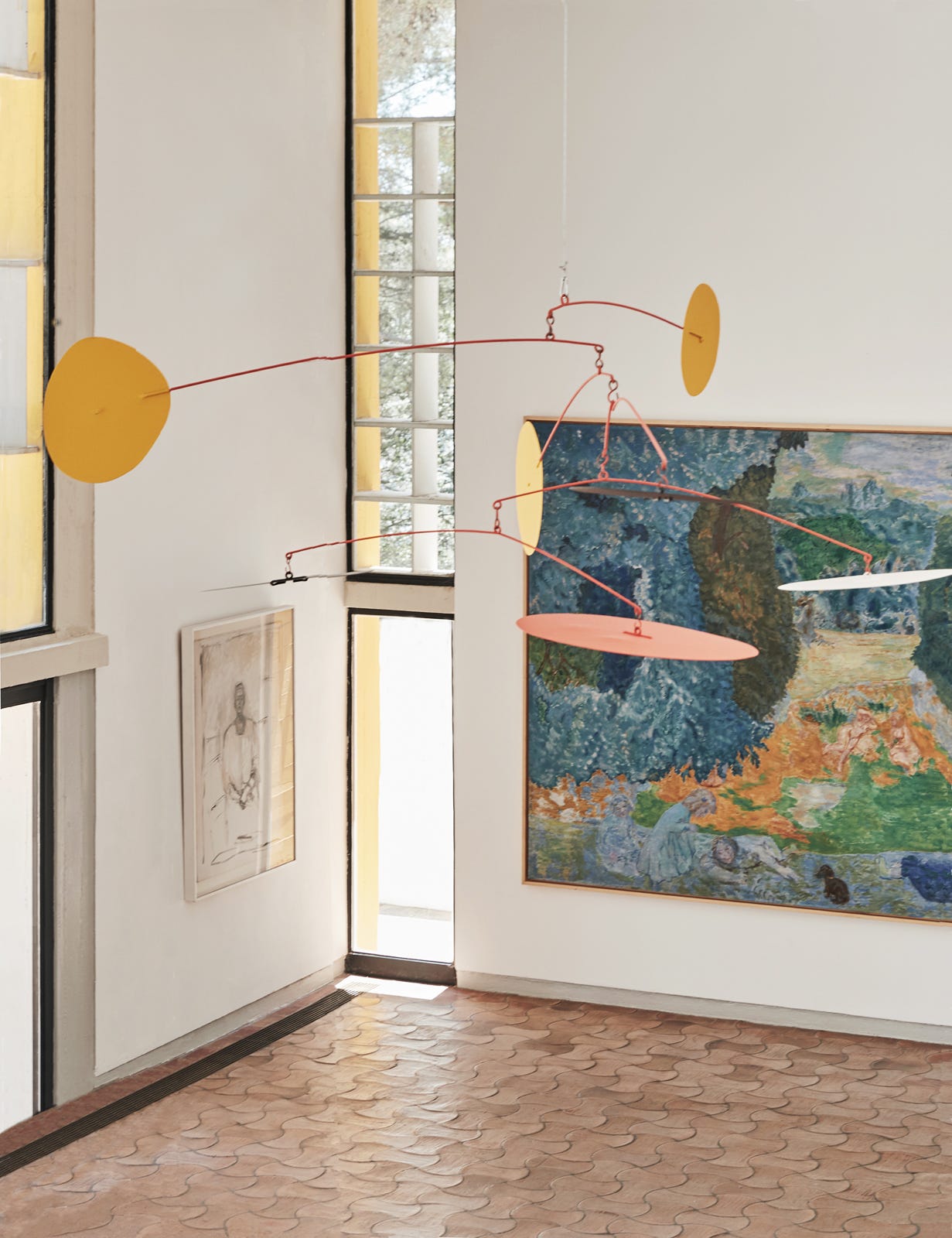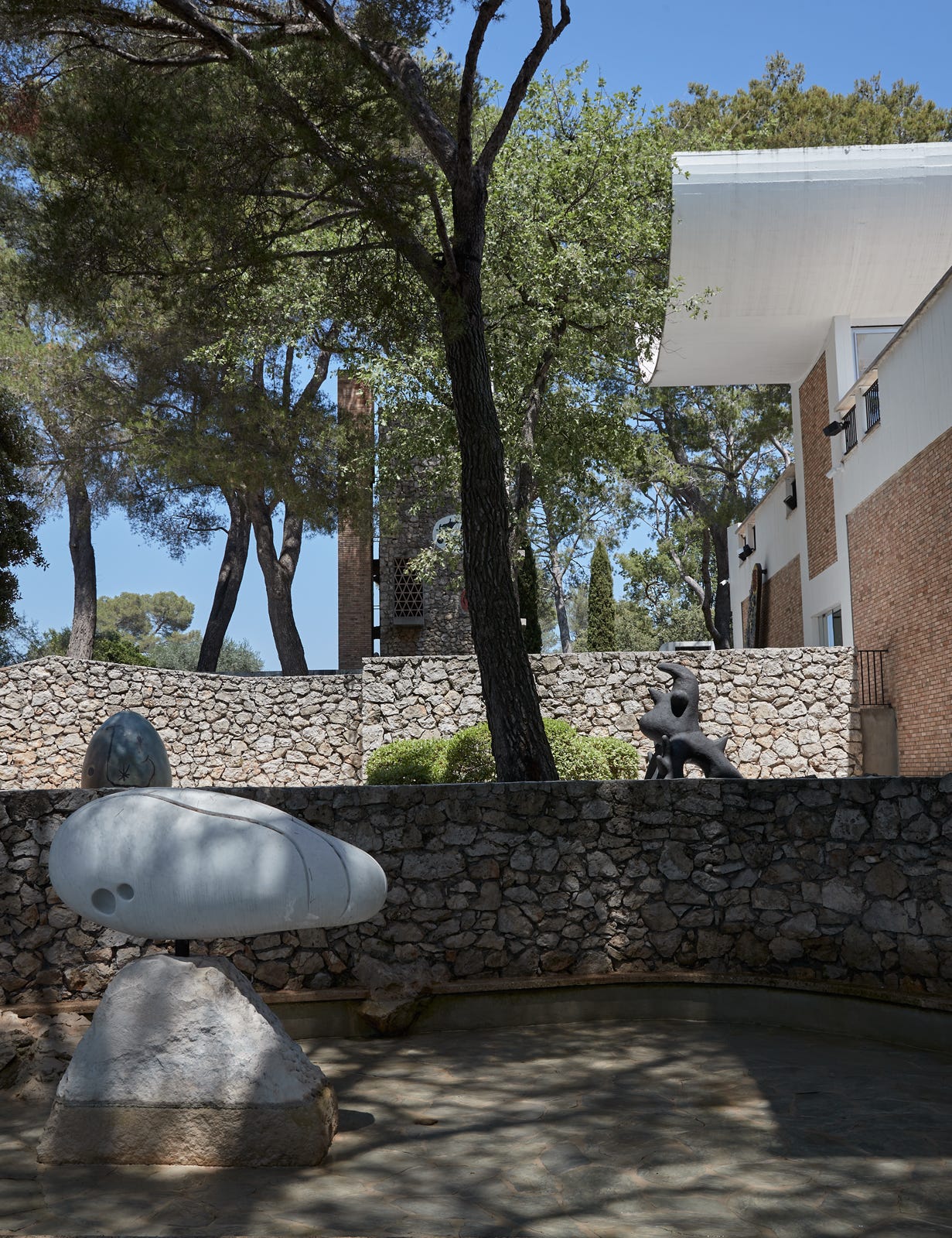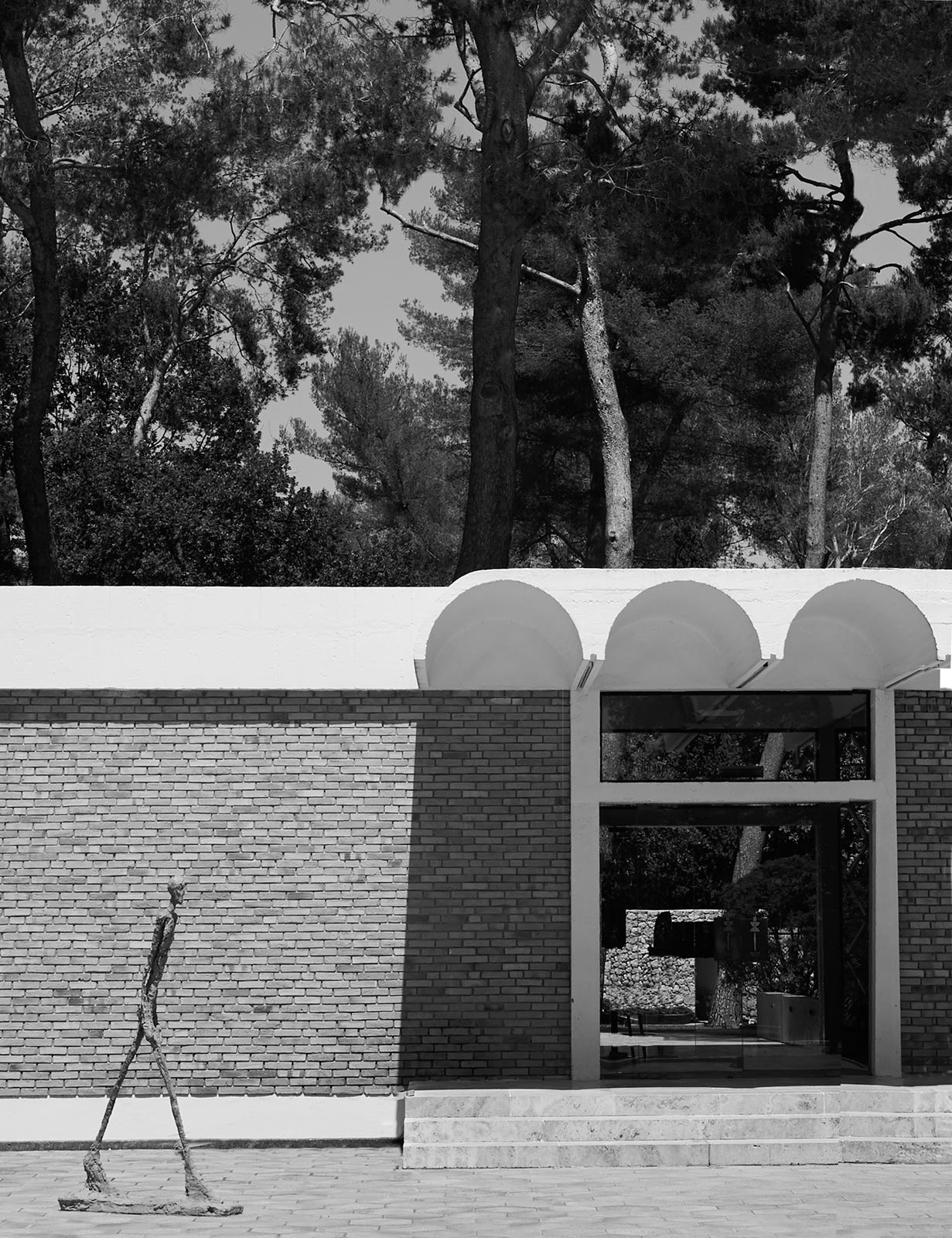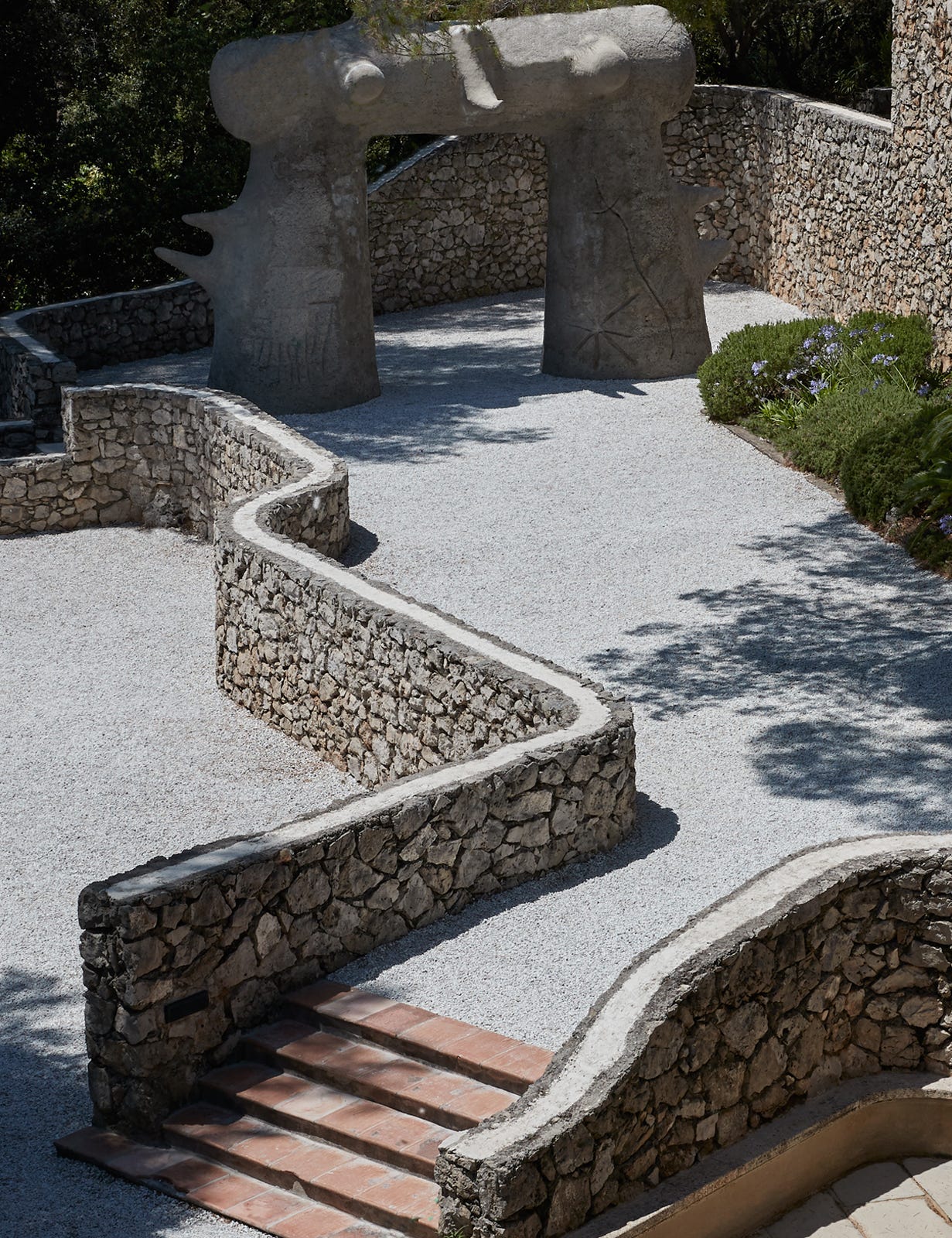Destination 1: Fondation Carmignac / Île de Porquerolles
From above, Île de Porquerolles looks like a croissant, a suitable shape for a place so decidedly French. Not as easily accessible as mainland Côte d’Azur, it welcomes fewer foreign tourists, and so the island vibe tends to skew towards summer casual rather than holiday chic.
The main part of Villa Carmignac is an old farm house, with the addition of 2,000 square metres of exhibition space, surrounded by a sculpture garden.
For those who think they recognize the villa, you might be right: Jean-Luc Gordard’s hit film “Pierre le fou” from 1965, starring Jean-Paul Belmondo and Anna Karina, was shot here.
In the 1980s, architect Henri Vidal turned the farm into a villa. Many years later Vidal – otherwise most famous for having designed the Museum of Modern Art in Nice – invited Édouard Carmignac to the estate to attend a wedding. The rest is part of French art history.
Having immediately fallen in love with the place, Carmignac decided to set up a foundation – today known as Fondation Cargmignac – with the villa as its base, dedicated to contemporary art and photojournalism.
The foundation was created in 2000, and includes an impressive collection of contemporary art, containing more than 300 works, including 17 pieces by Roy Lichtenstein (which makes it the largest private Lichtenstein-collection in France). Other prominent artists featured in the collection include John Baldessari, Sandro Botticelli, Jean-Michel Basquiat, Sterling Ruby, Urs Fischer and Andreas Gursky.
The Carmignac Photojournalism Award is organized annually and the recipient is awarded 50,000 euro, an exhibition and a catalogue.
As the villa was built in the heart of a National Park, it was strictly forbidden to add further construction to the existing house, and so the art galleries have been built beneath the surface, seemingly without modifying the existing house’s contours.
At the centre of the villa is an aquatic ceiling, which lets in natural light and illuminates these “underwater” spaces. The surrounding park is an artwork in itself. Designed by Louis Benech, the underlying philosophy was to, “respect and make known the singular local bio-diversity, thus presented and preserved thanks to the work of the Port-Cros National Park”.
Pioneer and endemic plants, such as the Hyères’ lavender trees, the Needle-leaved Broom and Serapias orchid, have been preserved here.
The large park has also been replanted with numerous olive trees, and in the northern plain is now a small orchard. Other plants in the garden include eucalyptus, mimosa and various citrus trees (such as tangerines, organs and lemons).
Artists from all corners of the world – such as Jeppe Hein, Jaume Plensa, Ed Ruscha and Cornelia Konrads – have been invited to create site-specific artworks, delicately placed among the garden’s many flowers, bushes and trees.
Destination 2: Musée National Fernand Léger / Biot
There are many great art museums on and around the Côte d’Azur. The particular light of this region has for hundreds of years attracted some of the world’s foremost artists, and their legacies still resonate in the area.
The work of Fernand Léger is instantly recognizable through his very personal interpretation of cubism: Coined “tubism” by art critic Louis Vauxcelles, who meant it in a derogatory way, referring to the Léger’s consistent use of cylindrical shapes, it could be seen as a reflection of Léger’s formal training as an architect.
Already in 1914, Léger’s paintings (which had until then been inspired by impressionism) started to become increasingly abstract, rendered in rough patches of primary colours.
Léger was an optimist and saw great potential in all things modern, believing in the progression promised by new technology. Perhaps this was also the reason that he started traveling to the States in the early 1930s (where he a few years later was commissioned to decorate Nelson Rockefeller’s apartment).
In 1955, Fernand Léger bought a villa in Biot, but died only a few months after the purchase had gone through. His widow, Nadia Léger, and Léger-collector Georges Bauquier, decided to honour his contribution to art history by converting the site of the villa into a museum.
Designed by architect Andreï Svetchine (who also performed the restoration work of nearby hotel and restaurant Colombe d’Or), the building is known for its large exterior mosaics as well as its garden, designed by Henri Fish, which contains sculptures based on Léger’s work.
Originally a private museum, the national museum of Fernand Léger has been owned by the French state since 1969.
Destination 3: Fondation Maeght / St-Paul-de-Vence
It doesn’t matter how many times you already have visited Fondation Maeght, every time brings the same feeling of wonder. The site’s organic interplay between art, architecture and nature creates an almost metaphysical experience.
The reason for this harmonious atmosphere can perhaps be found in its history: Opened in 1964, Fondation Maeght was the result of a collaboration among some of the leading artists of the 20th century, including Georges Braque, Joan Miró and Alberto Giacometti. Since then, it has been considered France’s most important art foundation, and is among the world’s leading cultural institutions.
The name behind the foundation belongs to the couple Aimé and Marguerite Maeght, prominent publishers and art dealers, and a central part of the international artistic community of the mid-20th century. Together, they established the foundation, with help from some of their closest friends, who also happened to be among the most lauded of the modern artists.
When it opened (through a ceremony arranged by Charles de Gaulle’s Minister of Culture André Malraux), it was France’s first private art institution.
The Maeghts found inspiration for the project in the way that many American art foundations – including the Solomon R. Guggenheim Foundation, the Barnes Collection and the Phillips Collection – had been set up in previous years.
Aimé Maeght had for a long time been Miró’s gallerist and editor, and had followed the construction of the artist studio that architect Josep Lluis Sert had designed for Miró in the outskirts of Palma de Mallorca. Impressed with the result, Maeght asked Sert to design the buildings for the foundation.
The Maeghts worked closely together with Sert in designing the space, ensuring that the building would be the best possible to exhibit modern and contemporary art in all its forms, as well as a place for creative people to meet and exchange ideas. Other artists helped with the project as well; Miró created a sculpture labyrinth and Giacometti made a sculpture for the court.
The main building is actually only 850 square metres, but its outline is planned in a decidely humanist way, open and welcoming, with rooms in varying sizes and surprising shapes.
The informal atmosphere is enhanced by the patios, the white colours of the walls and an intricate play with natural light, all signature elements of Sert’s architectural vision.
The art collection of La Fondation Maeght is one of the largest of modern art in Europe, and includes seminal pieces by Alexander Calder, Wassily Kandinsky, Barbara Hepworth, Germaine Richier and Raul Ubac.
The foundation also has an extensive reference library – with more than 35,000 titles – available to art historians, curators and students, with focus on books and journals specializing in modern and contemporary art.


